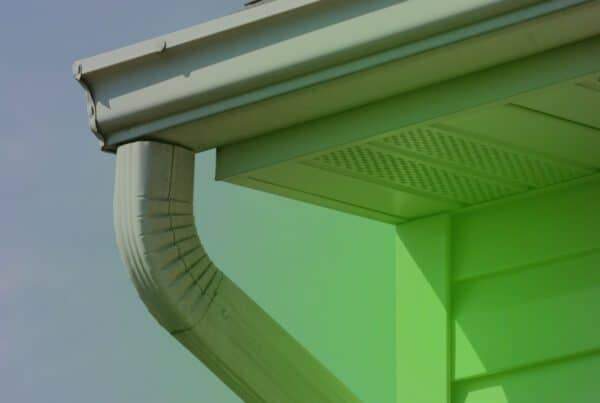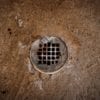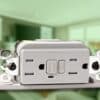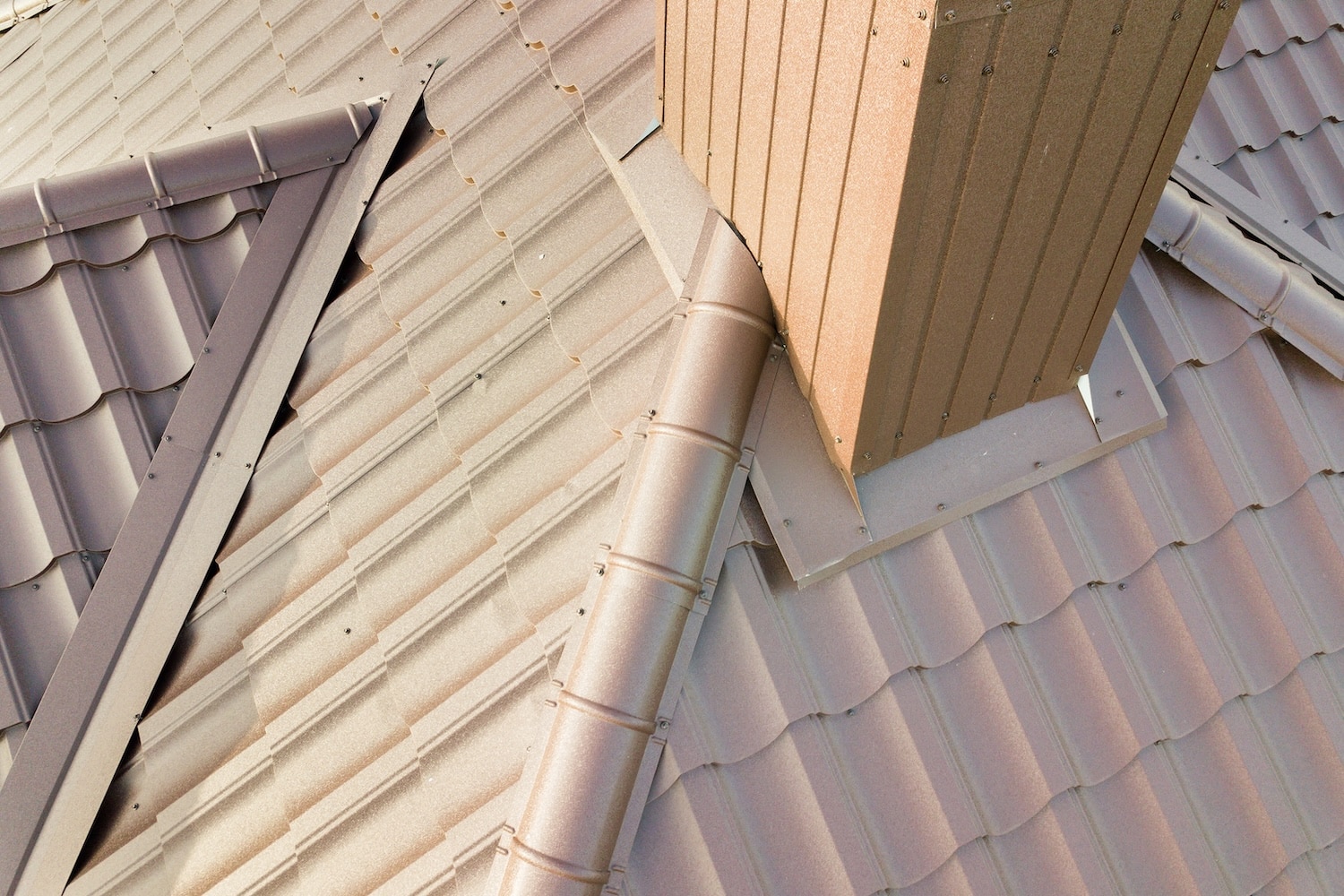
Flashing might not be something you think about often, but it’s one of the most important parts of your home’s defense against water damage. When installed correctly, flashing helps protect your roof, walls, and foundation by keeping water out of the places it’s not supposed to be.
Let’s break down what flashing is, why it matters, and how to tell when there’s a problem.
What It Does
Flashing is a thin, durable material installed anywhere two surfaces of your home meet—like where the roof joins a wall, or around a chimney, vent, or skylight. Its job is simple but important: it redirects water away from seams and joints that would otherwise be vulnerable to leaks.
Water is sneaky. Even a small gap can let moisture in, and once it does, it can lead to:
- Rotting wood
- Mold growth
- Damaged drywall or ceilings
- Foundation issues over time
Flashing creates a watertight seal in the places most likely to be exposed. It’s a small detail with big impact—and when it’s not doing its job, the damage can be expensive to fix.
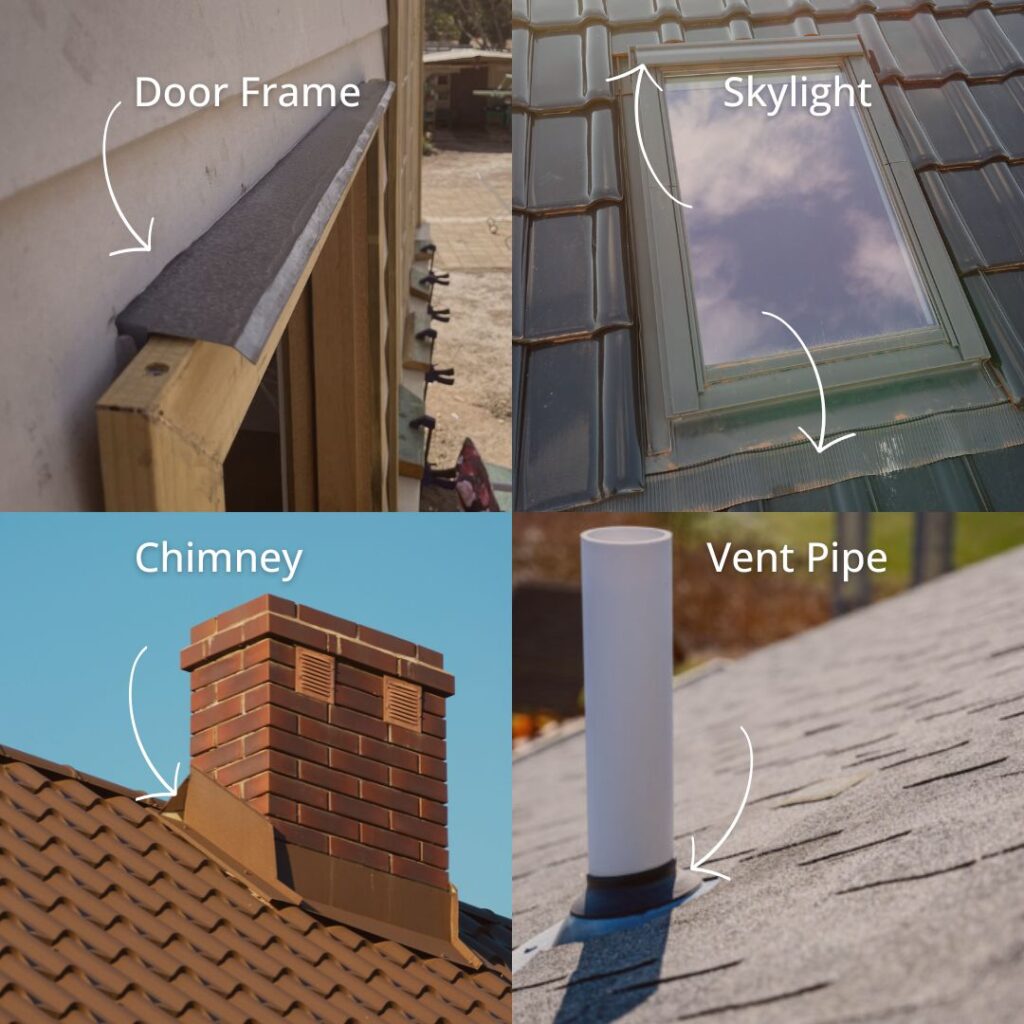
Most common places you’ll see flashing
Where Flashing Is Found on a Home
Flashing is most common around:
- Chimneys and skylights
- Roof valleys (where two roof slopes meet)
- Roof edges and eaves
- Vents and pipes
- Window and door openings
- Decks and porches attached to the home
If you’ve ever seen metal tucked under shingles or poking out near a vent pipe, that’s flashing. In most cases, you don’t need to see all of it—just know it’s there, sealed and layered properly to direct water downhill and off the roof.
What Flashing Is Made Of
Flashing comes in different materials depending on where it’s used and what your home is built with. Some of the most common include:
- Aluminum: Lightweight, rust-resistant (if coated), and easy to shape. It’s often used around roofs and chimneys.
- Galvanized Steel: Stronger than aluminum and more durable under harsh weather, but it can rust if the protective layer wears off.
- Copper: Highly durable and long-lasting, often used on older or custom homes. It’s pricey but holds up beautifully over time.
- Rubber or PVC: Used in certain areas like pipe boots or behind siding. These can wear down faster and are more prone to cracking with age or UV exposure.
The material choice matters, but good installation matters even more. Even high-quality flashing won’t work if it’s bent wrong, installed backward, or left unsealed.
How to Spot Flashing Damage
Most flashing issues are hard to see from the ground, but there are some signs homeowners can look for—especially after a storm or during seasonal maintenance.
Over 90% of roof leaks occur at flashing areas.
- Water stains on ceilings or walls near chimneys, skylights, or upper-level windows
- Dripping or leaks during heavy rain
- Rust or corrosion on visible flashing
- Missing or lifted shingles around vents or roof joints
- Mold or musty smells in the attic
Sometimes, the damage is subtle until it becomes a bigger problem. That’s why many issues are caught during home inspections—before they turn into a major repair.
What Causes Flashing to Fail?
Even properly installed materials don’t last forever. Here’s what tends to go wrong:
- Age and weather: Heat, cold, wind, and rain all wear flashing down over time.
- Poor installation: If it wasn’t installed with enough overlap or sealed correctly, it can pull away or leave gaps.
- Roof movement: As a house shifts or settles, flashing can crack, bend, or separate from the surface.
- DIY roof work: Untrained repairs (or even well-meaning patch jobs) can accidentally damage or misplace flashing.
Routine inspections help catch these issues before they cause real damage. It might not need frequent attention, but it does need to be checked—especially after major weather events or before selling a home.

Other Maintenance That Helps
Flashing works best when everything around it is in good shape. Here are a few simple things homeowners can do to help:
- Keep gutters clean so water flows off the roof properly
- Check caulk and sealant around windows, doors, and vents
- Trim overhanging trees that can drop branches or leaves on the roof
- Look for missing shingles or signs of roof wear in high-risk areas
A quick visual check once or twice a yea, especially after storms, can help you spot early warning signs of flashing issues.
When to Call a Professional
If you notice water stains, moldy smells, or any signs of leaks, it’s time to bring in a professional. Flashing repair or replacement isn’t a DIY job. It often involves climbing on the roof, removing materials, and resealing the area correctly.
A certified home inspector can:
- Spot flashing issues that aren’t visible from the ground
- Check whether existing flashing is installed correctly
- Recommend trusted contractors if repairs are needed
Whether you’re buying a home or maintaining one, having an expert take a closer look gives you a clearer picture of what’s going on—and how to stay ahead of costly damage.
Conclusion
Flashing may be out of sight, but it should never be out of mind. It plays a key role in keeping water where it belongs—outside. When it fails, water damage follows.
Not sure if your home’s flashing is doing its job? Schedule a professional inspection with Avalon Home Inspections. We’ll take a close look at all the spots that matter most and help you catch potential issues before they turn into costly repairs.

